Posted: 12/16/15
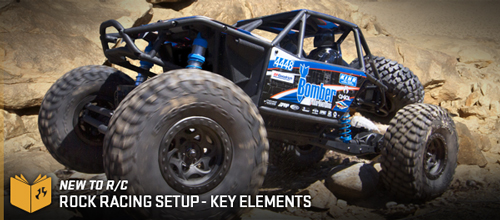
Rock racing combines rock crawling with off-road racing, and yet, it's so incredibly different than either. It's more brash and intense than technical rock crawling and it's more about sudden bursts of speed than wide-open off-road racing. As such, setting up a vehicle for competitive rock racing can be a little tricky. Whether you're brand new or already experienced, used this guide to make sure your Axial Racing rig is properly prepared for the ultra-demanding world of rock racing.
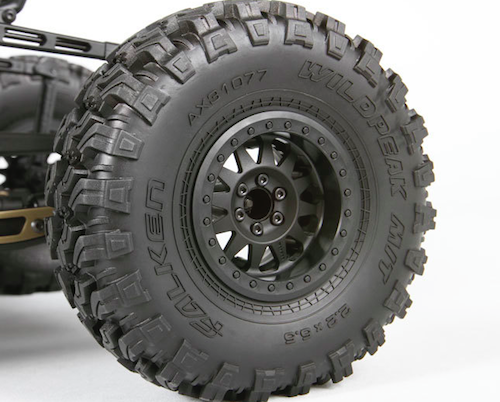
Tires
Rock racing calls for true dual purpose tires. The tires must deliver high speed performance on dirt and also provide rock grabbing traction—two very different tasks. And, the amount of each type of terrain—dirt versus rocks—isn’t likely to be equal. Depending on where you are rock racing, it may make more sense to concentrate on the high speed portions and go with tires that work best on dirt, or vise versa. No matter what, you will most likely be making some sort of compromise. Typically the compromise comes in the form of the foam inserts. Soft foam inserts will help tires conform to rocks, while firmer foam inserts will improve high speed performance. The track you’re racing on will determine which way to go. When selecting tires for competition, go with a soft compound such as Axial Racing’s R35 (white dot). These will provide the best traction on dirt and rocks.
It's also worth noting that if your vehicle is hard to control on the fast section and wants to spin out, you can try a harder compound tire up front and/or a less aggressive tread pattern on the front tires. Another secret to know is a larger pinion gear can also cure spinning out as it eases acceleration and the ability for the tires to break traction.
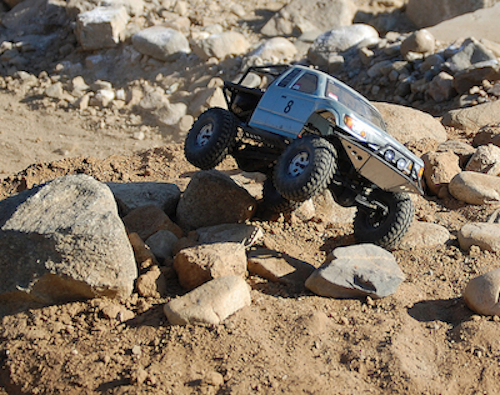
Center of Gravity
In rock crawling there is no such thing as too low of a center of gravity. This still hold true for rock racing. A low center of gravity will improve your vehicles ability to climb without tipping over backwards and a low center of gravity will keep your vehicle stable in high-speed corners. Depending on the class you’re running how you can lower the center of gravity easily varies. If you’re running a full Lexan body, lower it as much as possible and open up the wheel wells to allow room for the tires to move as the suspension cycles. Bodies weigh more than most people realize and you can see a huge performance improvement by simply lowering. Unless rules require it, lose unneeded accessories such as spare tires. While light buckets only weigh a few grams, for the best possible performance, you may consider removing or moving light buckets.
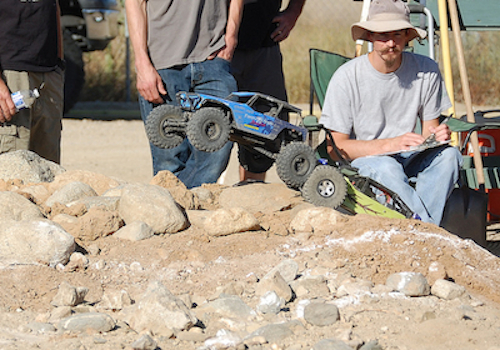
Weight Distribution
Since rock racing involves jumps, weight distribution (also known as weight bias) is very important and a little more complicated compared to a pure rock crawling setup. More weight up front is best for rock crawling, it isn’t that simple for rock racing. A neutral or slightly weight forward weight distribution is preferred as it will not overly compromise rock crawling performance, but too much weight forward of center can cause (or exasperate) nose diving off jumps. You simply have to test on the track your racing or on jumps of similar size at the speeds you’ll be hitting the jumps. While not a weight distribution issue, the first thing to check when experiencing chronic nose diving is your ESC’s drag brake setting. While drag brake is essential for rock crawling, it can cause nose diving by automatically applying brakes when you let the throttle go to neutral in the air. Less drag brake is more when it comes to rock racing. Just be sure to maintain control on the downhill sections many tracks have.
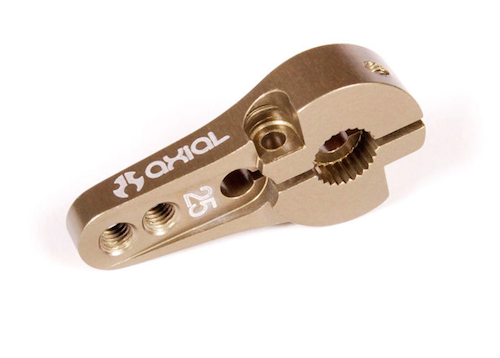
Durability
Most people think racing is all about speed—all about being the fastest. In rock racing, durability is far more important than speed. In real racing and in RC, no racing competition is as hard on a vehicle as rock racing. Rock racing is an incredible challenge—one that’s very hard on the vehicle. In full-size rock racing, at events such as the King of the Hammers, most entries don’t finish. RC racing is often the same if vehicles are properly prepared for the rigors of racing. Aluminum parts are they way to go for rock racing. They increase durability without adding too much weight. Titanium, if your budget allows, is an even better choice. Be warned, titanium doesn’t bend and rebound like aluminum. It’s stronger, but it snaps instead of bends when stressed to its limits. Start with an aluminum servo horn. This is an absolute must. Axial’s Universal Axle Set is also an item to have at the top of your list. Other aluminum upgrade parts can be added as parts fail or show excessive wear.
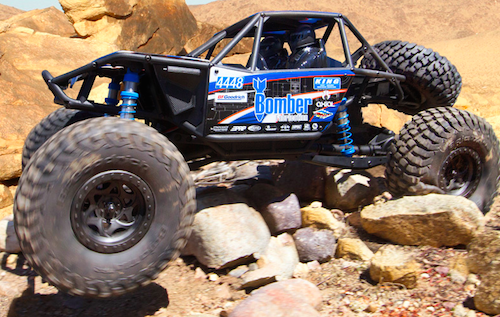
Ground Clearance
Optimal ground clearance will vary depending on the track, but you will want to get your rock racer as low as you can without making it impossible to navigate the rock portions. Scraping and dragging is okay. A lower will vehicle is more stable and less likely to roll in corners, on rocks and when taking jumps. Few crashes means less waiting for corner marshals and much faster laps.

Speed
The fastest car isn’t guaranteed to win in rock racing. While you don’t want purposely make your vehicle slow, don’t worry too much about having the fastest vehicle on the track. Stability and durability are far more valuable in rock racing than speed. Axial’s brushless setup are more than fast enough for rock racing. Some classes allow 3S LiPo batteries, which will provide a significant speed increase. If the track has a good amount of high-speed sections, running a faster 3S setup may be ideal.
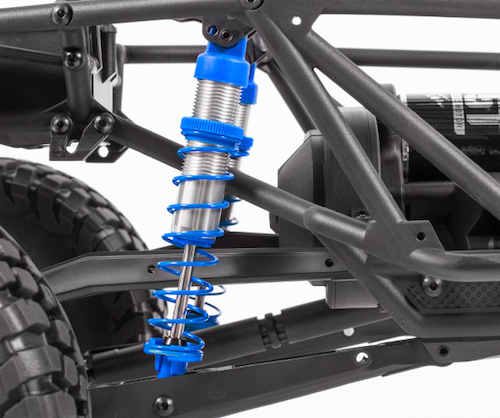
Suspension
Axial vehicles all have highly adjustable suspensions. While you can change internal shock components such as pistons and oil viscosity, a lot can be done to dial in handling by simply changing shock springs. Axial offers a wide variety of springs in both firm and soft rates. The goal is to have a plush suspension. Most rock racers are setup with overly stiff suspensions that don’t absorb impacts well. You can see these vehicles reacting to everything they hit as both ends bounce up and down without the suspension really working. Setup up your vehicle so that it lands from a one-foot-tall test drop with no bounce. It should land as if there were a pillow under it. This may require experimenting with oil and pistons to get just right. Thicker oil will absorb more energy and keep the springs from acting like pogos and smaller holes in the piston will slow down how quickly the oil can travel through the piston and slow down how quickly the suspension compresses. This will help keep the chassis from slapping the ground. A little chassis slap isn’t a bad thing. You just don’t want hard hits. Use sway bars to compensate for this soft suspension. The sway bars will keep the vehicle from rolling over in the corners.
You
The biggest factor in how successful you will be at rock racing is you. Of course, you provide the driving skill, but what is really at stake is how well you take care of the vehicle on the track. There’s an old saying in racing that goes: to finish first, you must first finish. These words couldn’t be more true than they are for rock racing. Don’t let the other vehicles determine how fast you go. Know what your vehicle can handle without breaking or crashing and stick to that pace. If a vehicle passes you, do not chase it down. Pretend you’re the only vehicle out there and concentrate on nothing other than consistent, crash-free laps.